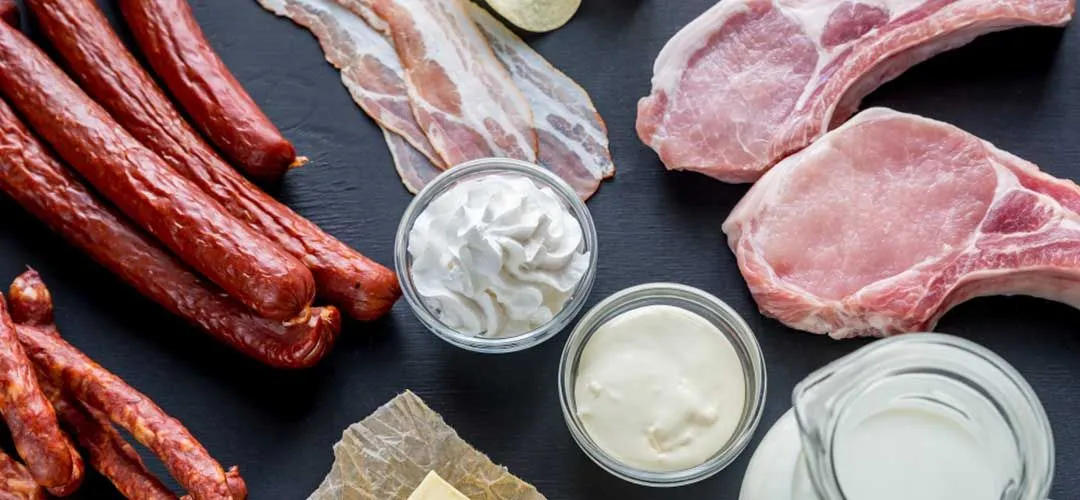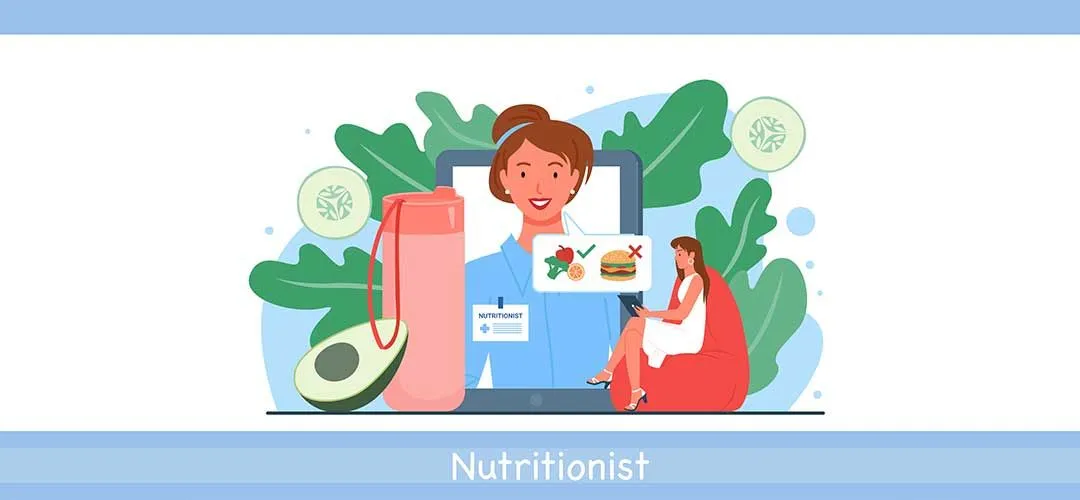Our body needs all the nutrients like fats, carbs, proteins, and fibers but in the right proportion. Fat is an important source of energy for your body and is also required by the body for the healthy development of hair, skin, and brain. However, consuming too much of it can result in obesity. Worse, some fats may also increase your risk for heart diseases and hence should be taken in moderation
Regarding weight loss, a daily intake of fatty foods is usually the first factor to be addressed properly. What makes it tricky is that every person’s energy requirement and expenditure patterns are vastly different. How much fat you need in a day depends on how many calories you consume in a day- and that could make your ideal diet plan different from your friend’s!
For muscle growth: Less than 30% of your daily calories intake
For fat or weight loss: About 20 to 35% of daily calorie intake
For making abs: About 405 of your daily calories intake
For heart patients or those with high cholesterol levels: Not more than 6% of daily calorie intake
For Keto and Mediterranean diets: About 50% and 40% of daily calorie intake respectively
Please note that the above numbers would also depend on several factors like your activity levels, dietary practices, illnesses and medications (if any), and suchlike.
Body Mass Index (BMI) is a ratio that explains the relationship between the calories you would need as per your body weight and height. It is a direct measure of your current physical health, especially if you are overweight or obese. If your BMI is more than 25, it means you are overweight and if it is more than 30, you are obese.
BMI Formula: The Body Mass Index is calculated by dividing the body mass (in kilograms) by the square of the body height (in square meters). It is thus expressed with a numerical value affixed with the unit of kg/m².
PS: Here’s a free online calorie calculator you could use to know your energy input and expenditure. We would also recommend that you consult an online wellness expert to get an ideal diet plan for yourself. This would be of more help to you if you are a working, pregnant, or elderly woman.
Of all the fats, monounsaturated fats get the most acceptance in medical and nutrition communities today. They are found in different quantities in oils like olive, sunflower, sesame, flax, peanut, safflower, etc. These oils primarily have monounsaturated fats but also contain traces of saturated and polyunsaturated fats.
These fats, known as MUFAs, raise the good HDL cholesterol and lower the bad LDL cholesterol. Along with this, they also protect against the buildup of plaque in your arteries. Monounsaturated fat is mostly found in food items like:
Olives and olive oil
Canola oil
Almonds
Cashews
Peanuts
Peanut butter
Sesame seeds
Avocados
Saturated fats consist of triglycerides in saturated fatty acids. Saturated fatty acids don’t have a double bond between the individual carbon atoms of the fatty acid chain. That is, the chain of carbon atoms is fully “saturated” with hydrogen atoms. Their daily intake should be done with caution.
Saturated Fats increase your triglycerides levels and harm your cardiac health. The trick is not to avoid eating them completely but rather to have them in moderation. Here’s what you would need to cut down on:
Fatty beef
Lamb
Pork
Poultry with skin
Beef fat (tallow)
Lard and cream
Butter
Cheese
For example, if you have a daily allowance of 1200 calories, then you need approximately 20-35% of it i.e. 330 calories, and 1 gram of fat equals 9 calories. You may consume 36-40 grams of fats to lose weight out of which only 7% should come from saturated fats.
Trans-fats are made from oils through a food processing method called partial hydrogenation. By partially hydrogenating oils, they become easier to cook with and less likely to spoil than do naturally occurring oils. Studies show that these partially hydrogenated trans-fats can increase unhealthy LDL cholesterol and lower healthy high-density lipoprotein (HDL) cholesterol.
This can increase your risk of cardiovascular disease. Numerous studies have linked an excess of trans-fat to an increased risk of heart disease, infertility, cancer, type 2 diabetes, liver problems, and obesity.
Trans-fats raise bad LDL and lower good HDL, increasing the risk of inflammation and heart diseases throughout the body. A weight-control study in animals found that even with the same number of calories and identical amounts of fat, animals that were fed fatty foods gained four times more weight and 30% more belly fat.
A Brandeis University study found that subjects who consumed products made with hydrogenated oil experienced a drop in their “good” HDL cholesterol and a significant rise in blood sugar in just four weeks.
Here’s how you can piling on trans-fats in your body:
Check the food label and see if there is any oil or hydrogenated oil/ partially hydrogenated oils mentioned on the label
Try eating more vegetables & fruits
Avoid deep-fried foods
Go easy with high-fat dairy products.
Stay away from margarine, doughnuts, French fries, and processed foods such as crackers, cookies, chips, and cakes.
The word calorie is often viewed in a negative light (the fewer the better). A calorie is a measure of energy that one should consume each day to carry out the vital biological, physical, and mental functions every day.
The key is to know how many of these energy units are needed and how you could have them.
To determine the necessary quantity of calories is very simple, multiply your weight in pounds times 10 or in kilograms times 22. This is the total that is needed daily to maintain your current weight. To lose weight, you must either eat fewer than that number or add exercise to your daily routine to use more calories than that number.
It is important to note that no two human bodies are alike, let alone the bodies of two pregnant women. It is important to figure out their energy requirements as per their respective daily activity levels.
Doctors believe that a woman should consume less than 90 gms of fats during pregnancy. One should also be cautious that this fat requirement is being completed from unsaturated fats to reduce the risk of heart diseases and rapid weight gain.
Your daily requirement of calories dictates your metabolic rate and activity levels. It also helps in optimizing the following biological functions:
The continual function of your brain, heart, and all of the other organs of the body.
Maintaining the shape and tone of the muscles of the body.
Maintaining body fat as a long-term energy source.
While the total number is of primary importance regarding body functions, calories are found in three different forms with different primary purposes:
They are best used as easily digested as a short-term energy source.
These are used to build the muscles of the body which control how we move.
The primary use is as a building block of the trillions of cells in the body and also to transport some of the vitamins that are provided by food.
The percentage that you should eat of each type should be as per the uses above. You may note that 65% of your calories should come from carbohydrates, 25% should come from protein, and the remaining 10% from dietary fat.
Part of the problem with weight control and obesity is that people often eat about 45% carbs, 45% fat, and 10% protein. Reducing the number of fats and carbs will help you have more proteins and vitamins.
The amount of time necessary to digest and absorb a meal is about two hours. Hunger and fullness are controlled by two hormones called ghrelin and leptin respectively. Everything put into the stomach will be digested as a mass. The idea is to take enough energy that lasts for 3-4 hours before repeating the process.
If more calories are consumed than needed for that period, the surplus will be converted and stored as body fat. By eating smaller meals more frequently, hunger can be avoided and the creation of fat deposits can be avoided.
The idea of eating large meals with long periods in between does not keep hunger from returning as the stomach has been emptied after two hours and thus the hunger hormone will return. But the number of calories eaten more than the amount needed for the 3-4 hour window will be deposited as fat.
A portion of food equals the size of your fist which is 3 ounces (84 grams) for a woman and 4 ounces (112 grams) for a man. This fact holds for both proteins as well as carbohydrates with one of each making a meal.
Some people will see this as a small amount of food, but the hunger hormone (ghrelin) stops being produced as soon as food enters the stomach and the fullness hormone (leptin) will start being produced in 5-10 minutes.
This cycle lasts for 3-4 hours when hormone sensitivity is normal. Obesity disrupts the body’s sensitivity to hormones. Obesity does not occur because of hormonal problems, the opposite is true, hormonal problems result from obesity.
We welcome you to make an informed guess about your current lifestyle and dietary and sleeping patterns with a qualified wellness expert online. She would be the best person to offer you a more precise list of the changes that you should make to the above to have a more fulfilled and healthy life.
You should also opt for a personalized diet plan from her. It would help you know precisely the details of the foods that you are eating and how much energy (or calories) you are getting from them. You may use this information to manage your weight or BMI better.
If you are an experienced healthcare or lifestyle expert yourself, we welcome you to try a new normal that will help you onboard your clientele and extend it on a secure online platform. You can use it to set up, grow, and run your services online, even when you are on the go!


